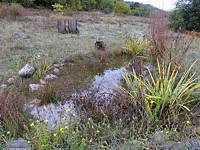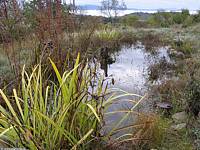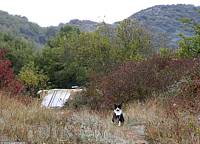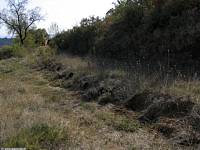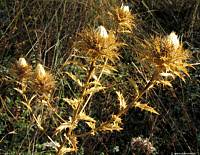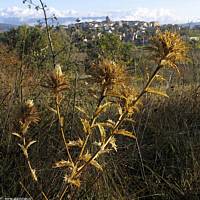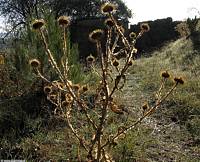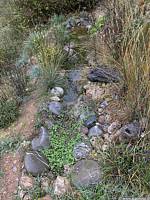|
|
Nature
Switched On
|
|
|
introduction
|
2011 October 23 to 28 October was dry and only at the end
of the month there was a depression which brought about 30 lt of
rain, which filled up ponds and
|
|
|
Upper pond, with the partly
green leaves of Iris pseudacorus on the right and some
flowering Picris hieracioides in the foreground. 28 Oct 9:49 |
||
|
'El Camarero' is a kind of
stable mate by now, his girlfriend, 'la Frisona´, is a more
irregular visitor. 28 Oct 10:01 |
||
| A
series of craters as if caused by a fighter-bomber. |
In the last weeks we had some notable visits from wild boar. We almost never get to see or hear them but their excavations all over the zone are substantial, especially in areas with straw cover (for plantings or against erosion). Some earth moving is not bad and might even be beneficial for new plant species to germinate and settle, but to see some areas completely turned upside down is somewhat unsettling, to say the least. I am not thinking (yet) about hunting them down with a riffle, but I have put a mass of bramble cuttings in the areas where they seem to enter the zone. Around the vegetable garden I even planted many bramble cuttings to form a future hedge. The vegetable garden itself has not received many visits and this might be party caused by a number of long bramble cuttings I had laid out over the straw mulch in summer. |
|
|
The recent rain after the drought was a nice moment to check the
hygrometric qualities of Carlina vulgaris, commented
last Sep
|
|
|
One of five specimen of Carlina vulgaris on the middle
terrace, looking north-east. |
Carlina vulgaris with
completely folded bracts, protecting the flowers from the rain when
still alive, but these parts of the plant are dead by now. 25 Oct 10:14 |
|
|
Another thistle, also dead by
now, and equally impressive, Onopordum acanthium. Notice the transparent stem ledges. 25 Oct 10:17 |
||
|
The occasional rain shower is probably also quite beneficial for the
filter pond, refreshing and washing the pond contents.
|
||
|
The filter pond with the green Veronica beccabunga
in the foreground which finally has started to thrive well in the
mud.
|
||
|
introduction
|
|
